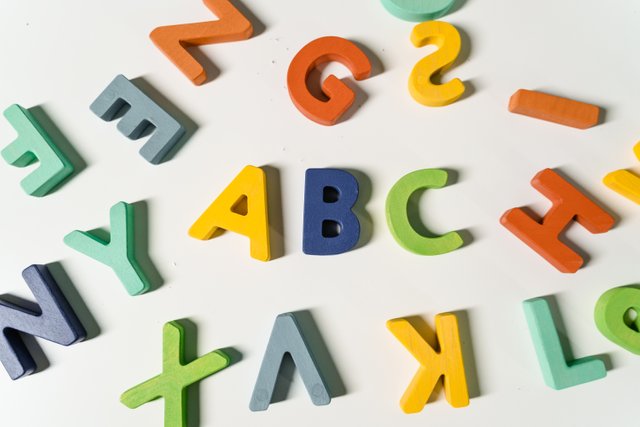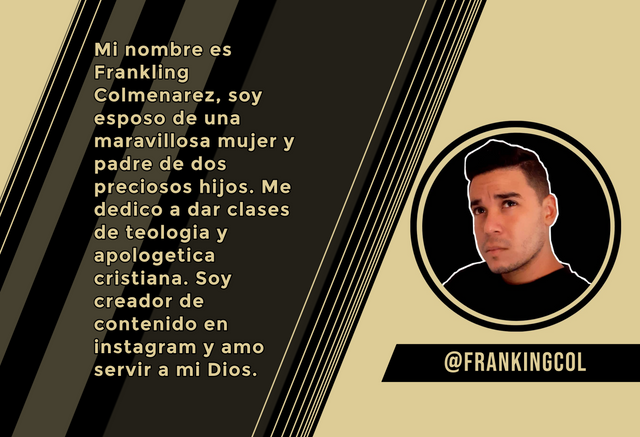Learn with Steem - Idioma español - Lección 2 || Spanish language - Lesson 2 || Por: @frankingcol
Queridos estudiantes, continuamos con la segunda clase sobre el idioma español. Durante la primera clase hemos aprendido un poco de la historia e importancia de aprender el idioma español. A partir de ahora vamos a comenzar a profundizar en la lengua para aprender a pronunciar correctamente las palabras. Al final de la clase dejaré una pequeña lista de tareas de las que puedes participar y obtener recompensas. ¡Aquí vamos!
.png)

Fonema de las palabras en español
Durante la clase pasada hemos aprendido un poco sobre la historia del lenguaje español. Algo que me gustaría recordar acerca de la diferencia del lenguaje español y del ingles, es que el ingles tiene raíces germánicas y el español tiene sus raíces en el romance, lo que hace que la pronunciación de las palabras sea completamente distintas.
En la clase de hoy aprenderemos dos aspectos muy importantes para comenzar a aprender el idioma español. El primer aspecto es el nombre de las palabras y el segundo es el sonido de las palabras.
Abecedario
En el Abecedario español encontraremos un total de 27 letras, antes eran más pero dos de ellas fueron eliminadas. Como he dicho anteriormente, el idioma español tiene su origen en el idioma Latín y este a su vez tiene origen del griego. Por lo que cabe esperar que algunas letras del abecedario español tengan raíces greco-romanas y otras directamente del Latín.
Por ejemplo:
La letra "G" antes no existía en el idioma español, los romanos solían utilizar la letra "C" para representar el fonema "G". Fue hasta el año 300 A.C. donde a la letra "C" se le añadió un pequeño trazo en su parte inferior y nació la letra "G".
Existen muchos otros ejemplos de como algunas letras obtuvieron su puesto dentro del Abecedario español. En el año 1969 se completó el Abecedario español y junto a las letras heredamos sus nombres:
| A (a), B (be), C (ce), | D (de), E (e), F (efe), | G (ge), H (hache), I (i), |
|---|---|---|
| J (jota), K (ka), | L (ele),M (eme), | N (ene), Ñ (eñe), |
| O (o), P (pe), Q (cu), | R (erre), S (ese), | T (te), U (u), V (uve), |
| W (uve doble), | X (equis), Y (ye), | Z (zeta) |
Algunas de estas letras tienen pequeñas variaciones dependiendo la ubicación entre los países hispánicos. Sin embargo, este es el nombre común para cada letra.

Fonema de las letras del Abecedario en español
El fonema es la unidad mínima con la que se construye el lenguaje oral. En el lenguaje español tenemos 5 vocálicos y 21 consonánticos.
Vocales
Las vocales tienen sonidos simples, no necesitan la ayuda de otras letras para poder pronunciarlas. Algo curioso, es que en el español no existen palabras sin vocales.
En el español no se diferencia entre vocales largas y fuertes como en el ingles. Las vocales en español tienen el mismo timbre, es decir, suenan igual, tanto para las vocales débiles como las vocales fuertes. Las vocales fuertes son aquellas que tienen un sonido más marcado y se pronuncian con la boca cerrada (I, U). Las vocales débiles (A, E,O) son más suaves y se pronuncian con la boca abierta.
A-E-I-O-U
Consonantes
Hay 22 consonantes en el idioma español y todas se pronuncian con la boca semicerrada. La única forma de pronunciar las consonantes es que estas estén acompañadas de una vocal.
BE-CE-GE-HACHE-KA
Existen dos tipos de consonantes, las primeras son las obstruyentes y son aquellas que al pronunciarlas interrumpen la salida de aire de la boca y por el contrario están las sonantes, que no obstruyen la salida de aire de la boca al pronunciarlas.
.png)
Nota importante:
Como parte de la tarea de la clase de hoy, dejaré un vídeo con el que puedas escuchar el sonido de cada una de las letras del abecedario en español. El vídeo es exclusivamente para esta clase.

TAREA
Observa el vídeo que he dejado durante en la clase, escucha atentamente (preferiblemente usa audífonos). Luego de escuchar repite el nombre y sonido de las letras. Comenta tu experiencia y que tan parecido lo has pronunciado al vídeo.
Escribe con tus propias palabras a qué se le llama diptongo y a qué se le llama triptongo.
Narra la historia detrás de algunas de las letras del abecedario en español (al menos dos letras) distintas a las de la clase.
Selecciona una canción en español y comienza a escucharla hasta que te la aprendas (aprenderla no es obligación). Escribe que canción has elegido, por qué elegiste esa canción y como te ha ido al escucharla.

Normas
Debe ser un niño verificado (sin asistencia de los padres)
Su publicación de tarea debe tener al menos 300 palabras.
Publique en Steemkids Community y reserve al menos un 10 % de beneficiarios para @steemkidss .
Debes pertenecer a alguno de estos clubes, #club5050 #club75 y #clubu100
Use las etiquetas #learnwithsteem y #steemexclusive #yourcountry y el estado de su club como parte de su hashtag.
Deja tu enlace de entrada en la sección de comentarios.
C.c



English
Dear students, we continue with the second class on the Spanish language. During the first class we have learned a little about the history and importance of learning the Spanish language. From now on we will begin to delve into the language to learn how to pronounce the words correctly. At the end of the class I will leave a small list of tasks that you can participate in and get rewards. Here we go!
.png)

Phoneme of Spanish words
During the last class we have learned a little about the history of the Spanish language. Something I would like to remember about the difference between the Spanish and English language is that English has Germanic roots and Spanish has its Romance roots, which makes the pronunciation of the words completely different.
In today's class we will learn two very important aspects to start learning the Spanish language. The first aspect is the name of the words and the second is the sound of the words.
Alphabet
In the Spanish alphabet we will find a total of 27 letters, before there were more but two of them were eliminated. As I said before, the Spanish language has its origin in the Latin language and this in turn has its origin in Greek. So it is to be expected that some letters of the Spanish alphabet have Greco-Roman roots and others directly from Latin.
For example:
The letter "G" did not exist before in the Spanish language, the Romans used to use the letter "C" to represent the phoneme "G". It was until the year 300 B.C. where a small stroke was added to the letter "C" in its lower part and the letter "G" was born.
There are many other examples of how some letters obtained their place in the Spanish alphabet. In 1969 the Spanish alphabet was completed and together with the letters we inherit their names:
| A (a), B (be), C (ce), | D (de), E (e), F (efe), | G (ge), H (hache), I (i), |
|---|---|---|
| J (jota), K (ka), | L (ele),M (eme), | N (ene), Ñ (eñe), |
| O (o), P (pe), Q (cu), | R (erre), S (ese), | T (te), U (u), V (uve), |
| W (uve doble), | X (equis), Y (ye), | Z (zeta) |
Some of these letters have small variations depending on the location between the Hispanic countries. However, this is the common name for each letter.

Phoneme of the letters of the Spanish alphabet
The phoneme is the minimum unit with which oral language is constructed. In the Spanish language we have 5 vowels and 21 consonants.
Vowels
Vowels have simple sounds, they do not need the help of other letters to pronounce them. Something curious is that in Spanish there are no words without vowels.
In Spanish there is no difference between long and strong vowels as in English. Vowels in Spanish have the same timbre, that is, they sound the same, both for weak vowels and for strong vowels. Strong vowels are those that have a more pronounced sound and are pronounced with the mouth closed (I, U). Weak vowels (A, E, O) are softer and are pronounced with an open mouth.
A-E-I-O-U
consonants
There are 22 consonants in the Spanish language and all of them are pronounced with the mouth half-closed. The only way to pronounce the consonants is that they are accompanied by a vowel.
BE-CE-GE-HACHE-KA
There are two types of consonants, the first are the obstruients and are those that when pronounced interrupt the air outflow from the mouth and on the contrary there are the sonants, which do not obstruct the air outflow from the mouth when pronounced.
.png)
Important note:
As part of today's class homework, I will leave a video with which you can listen to the sound of each of the letters of the alphabet in Spanish. The video is exclusively for this class.
The video appears in the Spanish section, at the beginning of the post.

TASK
Watch the video that I have left during the class, listen carefully (preferably use headphones). After listening, repeat the name and sound of the letters. Comment your experience and how similar you have pronounced it to the video.
Write in your own words what is called diphthong and what is called tripthong.
Tells the story behind some of the letters of the alphabet in Spanish (at least two letters) other than those of the class.
Select a song in Spanish and start listening to it until you learn it (learning it is not an obligation). Write which song you have chosen, why you chose that song and how it went for you listening to it.

Rules
Must be a verified child (no parental assistance)
Your assignment post must be at least 300 words.
Post to the Steemkids Community and reserve at least 10% of recipients for @steemkidss .
You must belong to one of these clubs, #club5050 #club75 and #clubu100
Use the #learnwithsteem and #steemexclusive #yourcountry tags and your club status as part of your hashtag.
Leave your entry link in the comments section.
C.c



Thanks for yet another awesome lesson. We appreciate all you do for the kids
Thank you dear community, I am very happy to be able to serve you and everyone here...!
I love this class! Thank you so much dear teacher for bringing us thus interesting lesson, I'm going to do my homework
I'm glad you liked it, I already want to see your homework friend..!!
Thank you for contributing to #LearnWithSteem theme. This post has been upvoted by @cryptogecko using @steemcurator09 account. We encourage you to keep publishing quality and original content in the Steemit ecosystem to earn support for your content.
Regards,
Team #Sevengers
Graciaas por el apoyo..!
Hello teacher, a question!
For task 1, are we to upload a video of us pronouncing the letters and sounds?
hello friend, upload a video no, just watch my video and narrate your experience and compare with my video how you have been pronouncing it. if you want to make the video it will be additional point.
Ok friend, thank you for your response
Hello @franklingcol, Your post has been selected as one of the quality posts for the day by steemkids community. Congratulations! Please keep making quality and original contents with us here. We love you so much and will like to read more of your posts.
Please endeavour to resteem, vote and comment on the post of selection. Thank you!
Hola prof, aquí esta mi participacion: https://steemit.com/hive-139765/@leyxi209/learn-with-steem-idioma-espanol-leccion-2-or-or-por-leyxi209